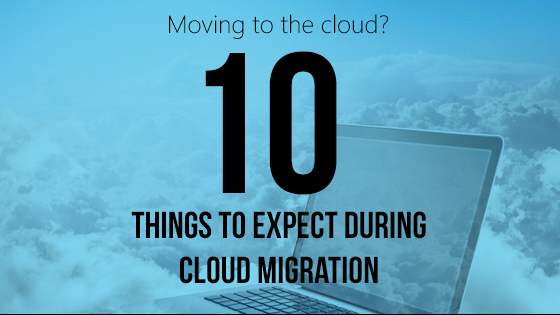Moving to the cloud? 10 things to expect during the migration
Most companies these days are either already using the cloud or are planning to move soon. It just makes too much sense – you get more services at a lesser cost, and you have to manage fewer issues. If your company is planning to move, here are 10 things to expect during the migration.
1. Better Services
When you access the cloud for the first time, you might find it hard to come to terms with how much more you can do. Cloud services like AWS, Azure, and IBM don’t just match your in-house infrastructure; they beat it easily with killer features. You can access features like machine learning and big data analysis with just a few clicks. Your company will suddenly be able to perform tasks that weren’t possible before.
2. Compatibility issues
It is almost impossible to run an operation as big as this without running into any issues. You are moving your whole company’s data and software infrastructure online – there are bound to be a few small problems. You shouldn’t panic if this happens. So many companies have already completed the journey thanks to the fact that answers to most problems are just a web search away from you.
3. Panicked Employees
We don’t know why but this wave of panic goes through the whole office when something as big as the migration operation is going on. Some people will be on the edge because their normal routine is disrupted; others will be worried about having to learn a whole new way of working. Then there will be a third group; employees who had wanted you to move to the cloud since forever and their happiness will be easily noticeable.
4. Wrong Configurations
Unless your planning is 100% perfect, here are bound to be a few issues here and there. Cloud service providers offer a lot of different types of virtual machines. Some are heavy on processing with advanced CPUs, some are better for data storage with a lot of cheap storage, while others are for fast reading and writing of data. It is possible to get this right on the first try if you use an MSP for the migration.
5. Temporary Slump in Productivity
Managers hate this – when you migrate you will immediately see a drop in productivity around the office. This isn’t because the system is bad, it just takes the people a few days to get used to the new way of doing things.
6. Better User Interfaces
For most people, cloud platforms are a love at first sight, mostly because they are much better designed than most in-house solutions. In-house solutions don’t really take beauty into the account and mostly focus on the productivity. Products like AWS and Azure, on the other hand, have professional UI experts dedicated to making using them a joy.
7. Increased Accessibility
When you use a public cloud, you can access it from anywhere and from any compatible device. You and your colleagues will no longer be bound by their desks and desktop computers. You will all be able to access the platform through your computers, phones, and tablets from any location in the world as long as you have internet. It is a very liberating feeling to know that you can work from anywhere.
8. Networking Requirements
Once you move to the cloud, you will realize how much you need to upgrade your company’s network and internet capabilities. Cloud is accessed through the internet and most companies end up increasing their internet speed by a factor of 2 or more. Slow internet will just bottleneck your whole system. Almost everyone underestimates how much internet usage will occur after moving to the cloud.
9. Surprising ease of use
Companies that run public clouds know their users. You and your IT experts will be surprised at how easy the whole process was and how familiar they are with most things already. Remember that the cloud was developed by people who have been involved with similar infrastructures for decades. They made sure that clouds could easily be understood by industry veterans.
10. Flexibility
Flexibility is one area where minds of new cloud users are the most blown. Changing the infrastructure and adding servers is a pain for companies at every level. The networking expert hates reconfiguring the network. The users hate generating the procurement request and hoping it is expected. The system architect hates having to ensure the system works correctly. With cloud computing it happens with just a few clicks. Want more processing power for a few hours? Not an issue. Want to increase bandwidth just for launch day? Not a problem.
Conclusion
There are a lot more things you will run into during migration. It always helps to have some professional help with you to mitigate any issue. Look into what an MSP can do for you to ensure the migration process goes smoothly.



